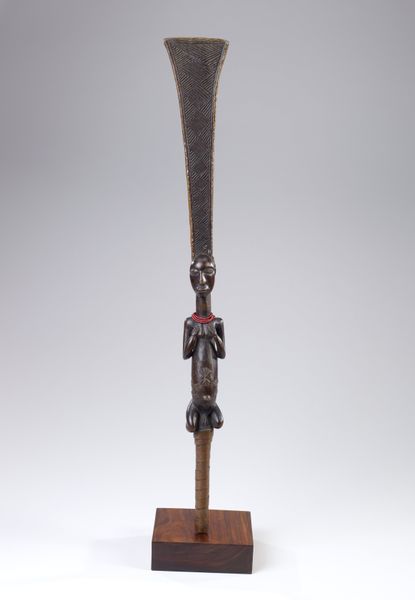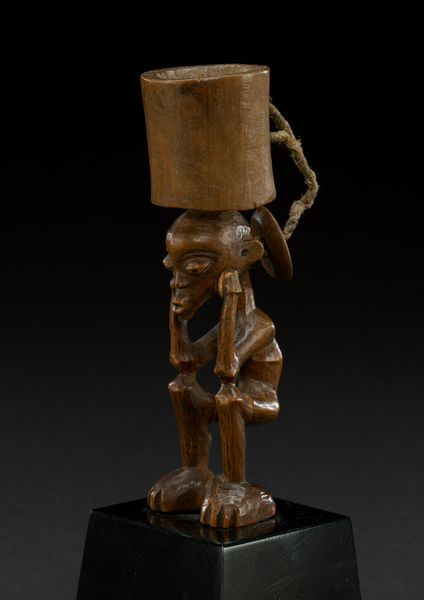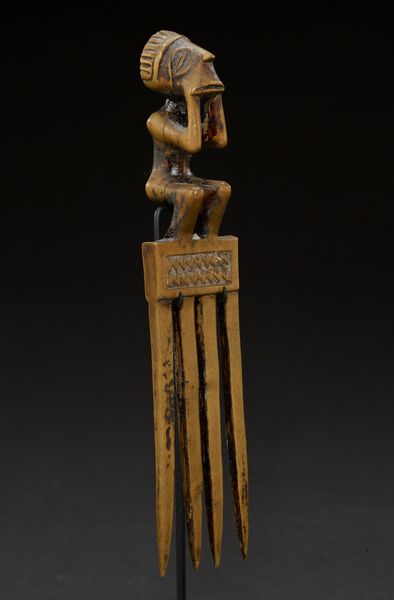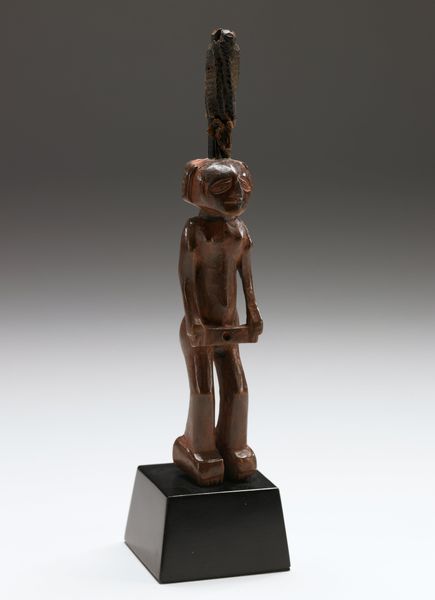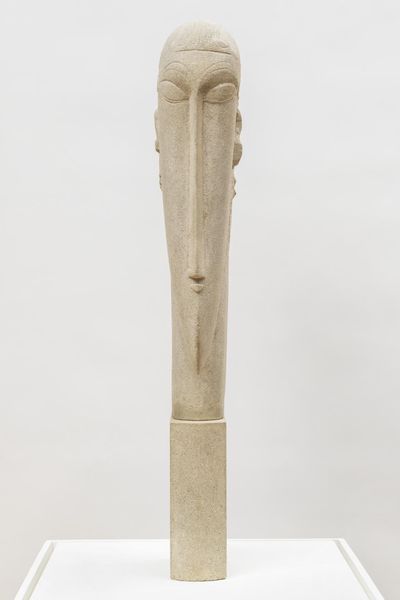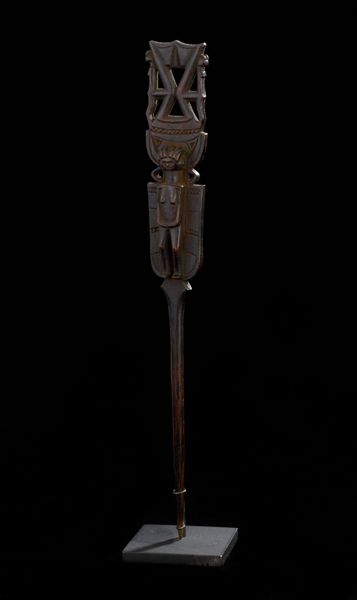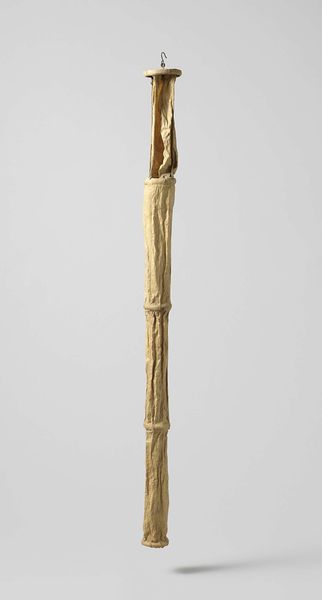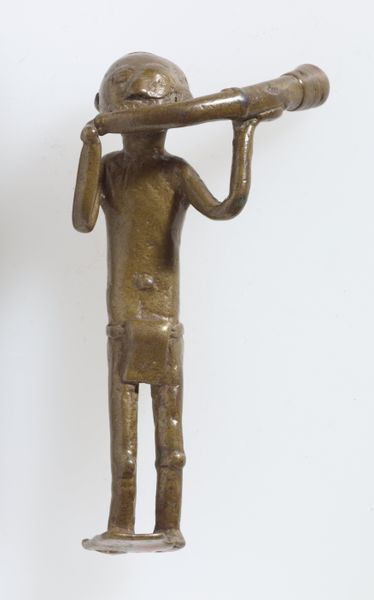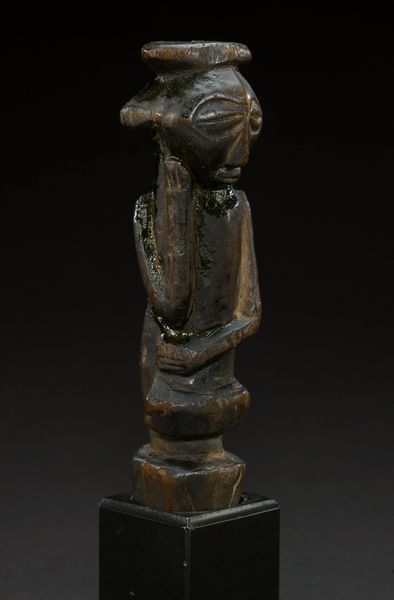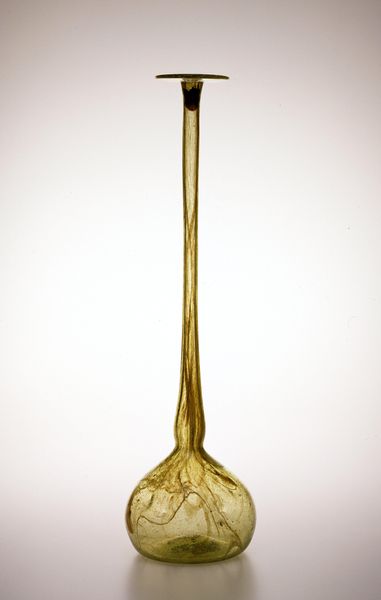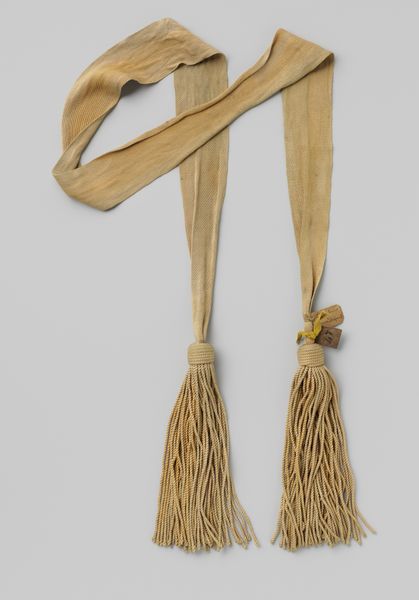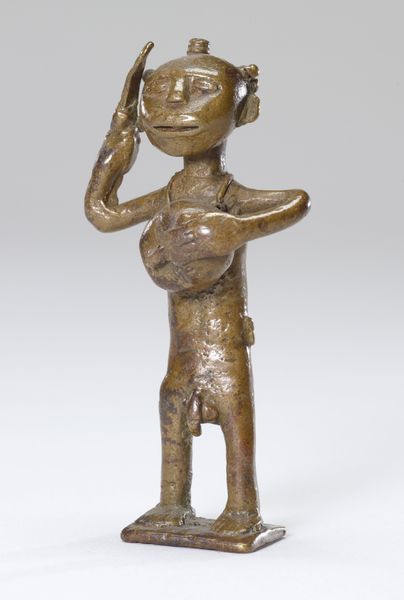
carving, sculpture, ivory
#
carving
#
figuration
#
sculpture
#
ivory
#
miniature
#
indigenous-americas
Dimensions: 3 15/16 x 3/4 x 3/8 in. (10 x 1.91 x 0.95 cm)
Copyright: Public Domain
Curator: What a compelling little object. The Minneapolis Institute of Art holds this Tlingit "Blanket Pin" dating from the late 19th century. Editor: The smoothness is the first thing I notice. It has a pristine, almost otherworldly feel despite its age. And the striking green accent of the eyes gives an intensity to the carved figure. Curator: Yes, its pristine nature is interesting. Ivory, the primary material, comes with its own history of trade and extraction, of course. Understanding those material pathways informs the choices of the Tlingit artist. The artist actively selected this dense material from walruses to create an object with significant personal and societal purpose, used for fastening woven blankets and robes, which were vital status symbols and part of their potlatch ceremonies. Editor: Focusing on the pure form of the object—the simplification of the animal form, that long, tapering pin creating this single vertical axis—there's something incredibly elegant about the composition. Note the slight asymmetry in the animal's features, hinting at both the natural form and a constructed symbolic presence. Curator: And how interesting, then, to consider that asymmetry a direct link to the artist, a visible manifestation of labor and intent within a community of specific traditions and economic exchanges. These pins weren't mass-produced, each one tells its story of indigenous agency. Editor: The relationship between the carved animal, potentially a bear or a wolf, and its utilitarian function is striking, it complicates semiotic structure and prompts layers of interpretation: is it purely decorative, a symbol of clan identity, or something more spiritually resonant? The very fact it’s a miniature encourages closer readings. Curator: Yes, these Northwest Coast Indigenous pieces defy the Western art historical narrative because their status isn't found in their "fine art" nature. The ivory has a global dimension—but at its heart, it served a hyper-local community with very direct needs. Editor: It seems like such a modest yet forceful assertion of cultural identity, material ingenuity, and artistic skill, really making us reflect upon its intrinsic beauty but also its context within an economy. Curator: Precisely! And I believe looking at its means of production in its original indigenous context sheds great light on trade networks that connect past with present.
Comments
minneapolisinstituteofart about 2 years ago
⋮
Tribes that live in the northern section of the Northwest Coast are known for their highly refined sculpture. Characterized by low-relief carving, these northern tribes, which include the Tlingit, often feature clan symbols as their subjects. The bear is a central theme in Tlingit art, and is considered a close relative to humans. Because of this, bears are believed to have special spiritual powers and are, therefore, worthy of respect. Though a small, utilitarian object, this pin brilliantly represents the style and iconography of Northwest Coast tribal traditions. Shallowly carved in abstracted, geometric forms, the sacred bear is shown holding a fish. In addition to the fastidious carving, the artist further embellished the pin by inlaying a piece of mother-of-pearl for the bear's eye. This pin would have been used to fasten a textile that was draped over the shoulders and around the torso. Worn on the chest, the image of the bear would have been proudly displayed.
Join the conversation
Join millions of artists and users on Artera today and experience the ultimate creative platform.
